7.4 /10 1 Votes7.4
82% Rotten Tomatoes Country United States Genre Mystery novels Publication date July 1974 Music director John Addison | 6.8/10 IMDb Author Language English Initial release 24 October 1976 | |||||||||||||||||||||||||||||||||
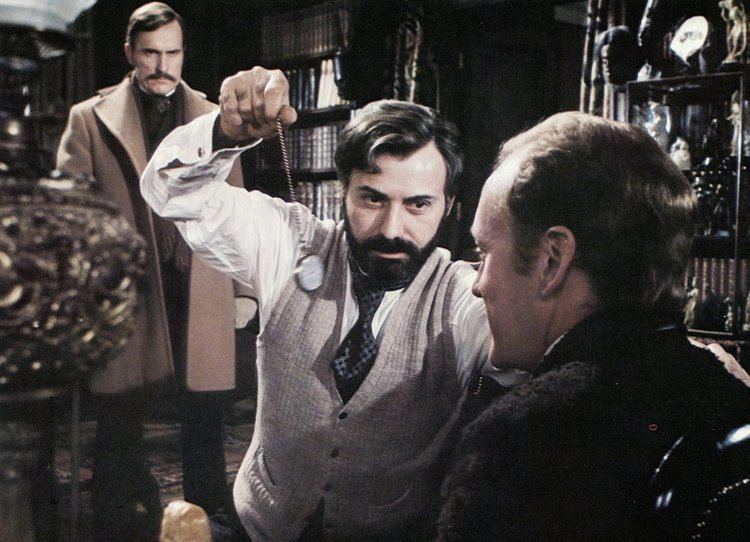 | ||||||||||||||||||||||||||||||||||
Nominations Academy Award for Best Writing Adapted Screenplay Cast Similar Professor Moriarty movies, Story by Arthur Conan Doyle, Mysteries | ||||||||||||||||||||||||||||||||||
The Seven-Per-Cent Solution: Being a Reprint from the Reminiscences of John H. Watson, M.D. is a 1974 novel by American writer Nicholas Meyer. It is written as a pastiche of a Sherlock Holmes adventure, and was made into a film of the same name in 1976.
Contents
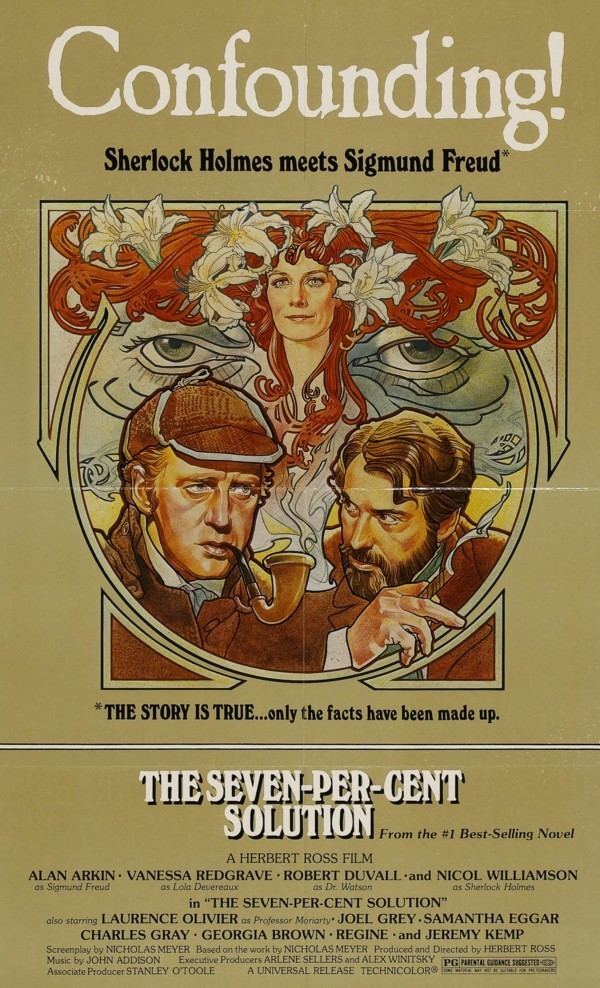
Published as a "lost manuscript" of the late Dr. John H. Watson, the book recounts Holmes' recovery from cocaine addiction (with the help of Sigmund Freud) and his subsequent prevention of a European war through the unravelling of a sinister kidnapping plot. It was followed by two other Holmes pastiches by Meyer, The West End Horror (1976) and The Canary Trainer (1993), neither of which has been adapted to film.
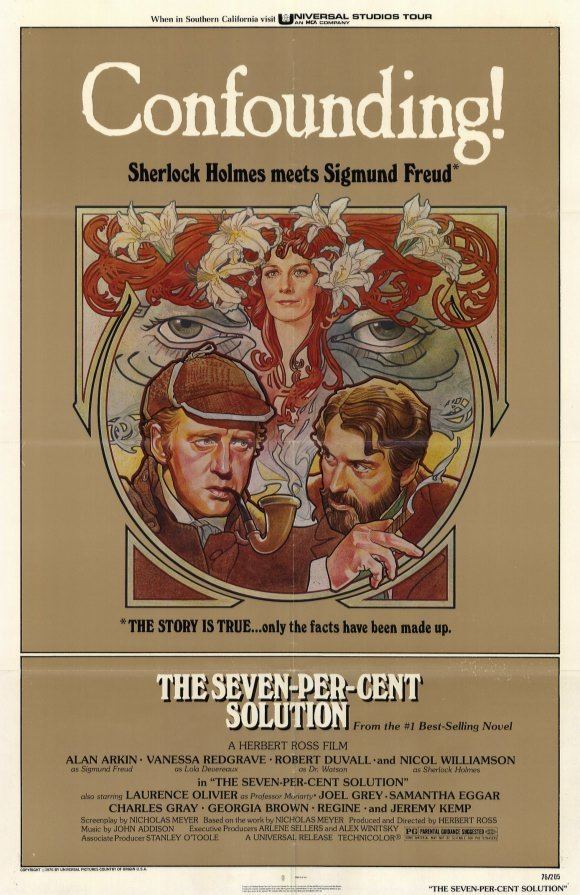
The Seven-Per-Cent Solution was ranked ninth in the Publishers Weekly list of bestselling novels from 1974 and made The New York Times Best Seller list for forty weeks between September 15, 1974 and June 22, 1975.
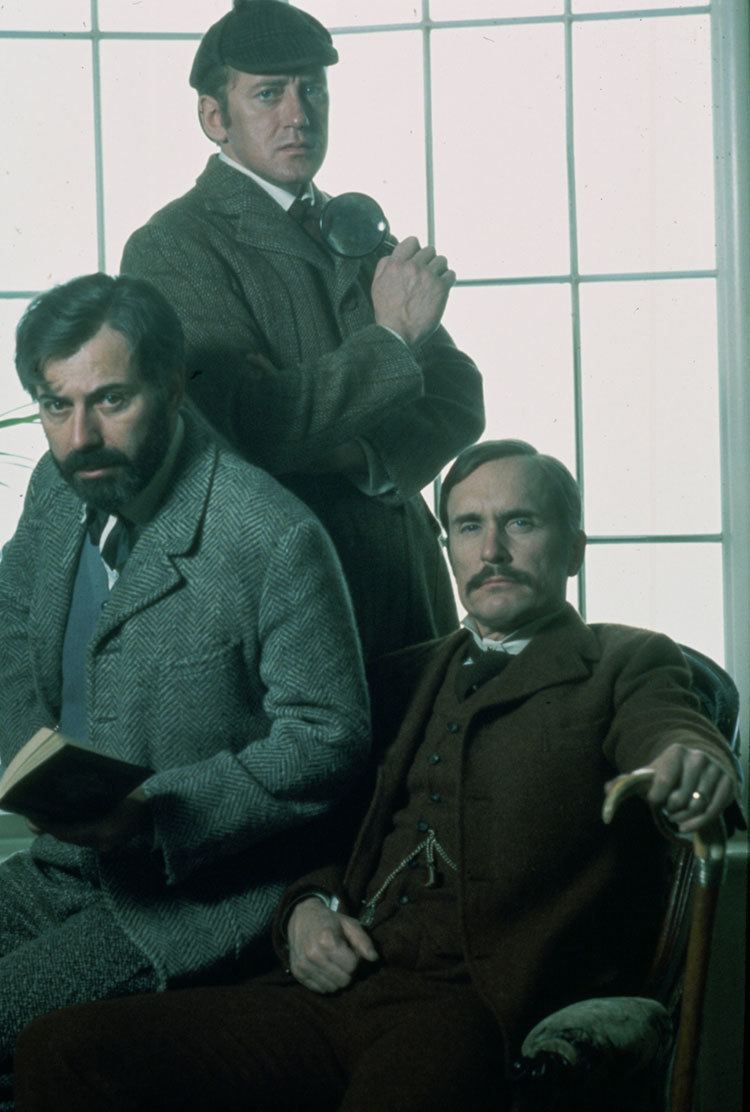
Plot
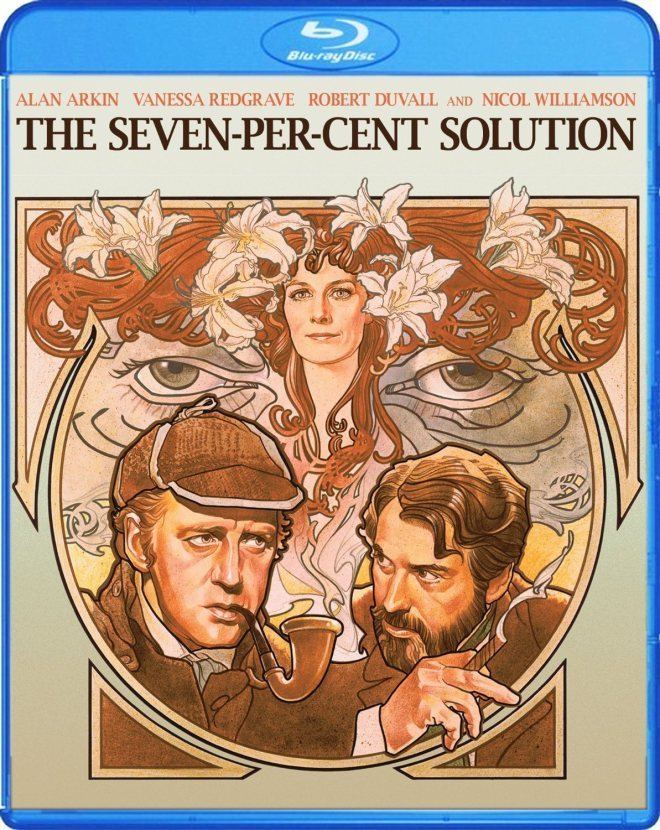
An introduction states that two canonical Holmes adventures were fabrications. These are "The Final Problem", in which Holmes apparently died along with Prof. James Moriarty, and "The Empty House", wherein Holmes reappeared after a three-year absence and revealed that he had not been killed after all. The Seven-Per-Cent Solution's Watson explains that they were published to conceal the truth concerning Holmes' "Great Hiatus".
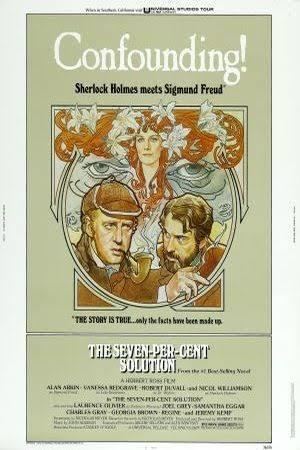
The novel begins in 1891, when Holmes first informs Watson of his belief that Professor James Moriarty is a "Napoleon of Crime". The novel presents this view as nothing more than the fevered imagining of Holmes' cocaine-sodden mind and further asserts that Moriarty was the childhood mathematics tutor of Sherlock and his brother Mycroft. Watson meets Moriarty, who denies that he is a criminal and reluctantly threatens to pursue legal action unless the latter's accusations cease. Moriarty also refers to a "great tragedy" in Holmes' childhood, but refuses to explain further when pressed by Watson.
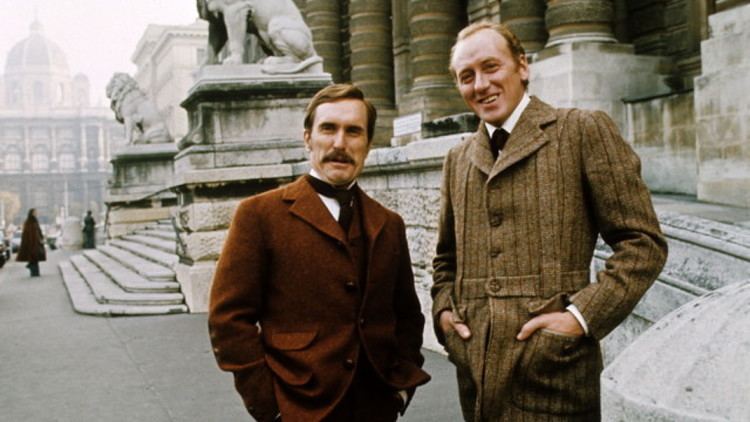
The heart of the novel consists of an account of Holmes' recovery from his addiction. Knowing that Sherlock would never willingly see a doctor about his addiction and mental problems, Watson and Holmes' brother Mycroft induce Holmes to travel to Vienna, where Watson introduces him to Dr. Freud. Using a treatment consisting largely of hypnosis, Freud helps Holmes shake off his addiction and his delusions about Moriarty, but neither he nor Watson can revive Holmes' dejected spirit.
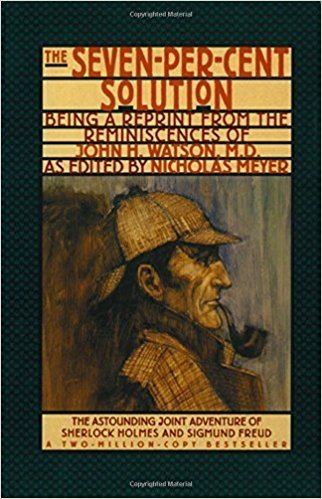
What finally does the job is a whiff of mystery: one of the doctor's patients is kidnapped and Holmes' curiosity is sufficiently aroused. The case takes the three men on a breakneck train ride across Austria in pursuit of a foe who is about to launch a war involving all of Europe. Holmes remarks during the denouement that they have succeeded only in postponing such a conflict, not preventing it; Holmes would later become involved in a "European War" in 1914.

One final hypnosis session reveals a key traumatic event in Holmes' childhood: his father murdered his mother for adultery and committed suicide afterwards. It was Moriarty who informed Holmes and his brother of their deaths, and his tutor then became a dark and malignant figure in his subconscious. Freud and Watson conclude that Holmes, consciously unable to face the emotional ramifications of this event, has pushed them deep into his unconscious while finding outlets in fighting evil, pursuing justice, and many of his famous eccentricities, including his cocaine habit. However, they decide not to discuss these subjects with Holmes, believing that he would not accept them, and that it would needlessly complicate his recovery.
Watson returns to London, but Holmes decides to travel alone for a while, advising Watson to claim that he had been killed, and thus the famed "Great Hiatus" is more or less preserved. It is during these travels that the events of Meyer's sequel The Canary Trainer occur.
Film adaptation
The story was adapted for the screen in 1976 in a Universal Studios production, directed by Herbert Ross, scripted by Meyer and designed by James Bond veteran Ken Adam. The all-star cast featured Nicol Williamson as Holmes, Robert Duvall as Watson, Alan Arkin as Dr. Sigmund Freud, with Laurence Olivier as Moriarty, Charles Gray as Mycroft Holmes (the role he reprised in the Jeremy Brett TV series), Samantha Eggar as Mary Watson, Vanessa Redgrave as Lola Devereaux, Joel Grey as Lowenstein, and Jeremy Kemp as Baron von Leinsdorf and Williamson's then wife Jill Townsend playing his character's mother (Mrs. Holmes). The film was made at Pinewood Studios with location shooting in the UK and Austria (including the famous Austrian National Library); the tennis match/duel between Freud and von Leinsdorf was filmed on one of the historic real tennis courts at the Queen's Club in West Kensington, London. The chase on the trains was shot with set-dressed British steam locomotives and freight cars dressed up as coaches.
Meyer adapted his novel to screenplay form, but the film differs significantly from the novel, mainly by supplementing the book's Austrian baron-villain (played by Jeremy Kemp) with an older Turkish foe. Also, the film departs from traditional Holmes canon in portraying the detective as light-haired instead of the traditional black-haired, and as a somewhat flirtatious Holmes at that (Doyle's hero never let women see any signs of interest). Furthermore, the traumatic revelation that affected Holmes in his childhood is heightened – the final hypnosis therapy reveals that Sherlock witnessed his mother's murder by his father, and that Moriarty himself was his mother's lover. Finally, the lady whom Holmes saves in the story's climatic chase, Lola Devereaux, appears on his ship as he departs for his sabbatical with the purpose of joining him and Holmes eagerly accepts the offer. Meyer's three Holmes novels are much more faithful to the original stories in these regards.
